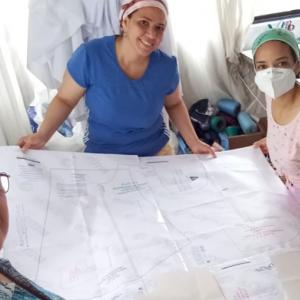What is Collective Intelligence?
At its simplest, collective intelligence can be understood as the enhanced capacity that is created when people work together, often with the help of technology, to mobilize a wider range of information, ideas and insights. Collective intelligence emerges when these contributions are combined to become more than the sum of their parts.
Over centuries, every society has relied on collective intelligence – sharing knowledge, culture and tools to better manage crops, combat diseases, anticipate weather patterns and much more.
Since the start of the digital age, however, collective intelligence has really evolved.
There are now thousands of digital tools helping us to pool ideas in entirely new ways, and connect people across huge distances. In the 19th century, it took almost 70 years to crowdsource the 400,000 words that made up the complete first edition of the Oxford English Dictionary. A modern-day equivalent, the English Wikipedia, receives more than 1.9 edits per second and sees about 200,000 new pages created per month.
Digital technologies are also enabling us to generate new sources of data. We can use satellite imagery or mobile phone data, for example, to create new intelligence on our world and societies. Many of these new data sources are generated through the ‘digital exhaust fumes’ of human activity, or through the active contribution of volunteers. Most of this new data is made useful by the legions of women and men helping to label the datasets that are used to train machine models, and the efforts of people to interpret their meaning.
Increasingly, AI is being applied in combination with collective intelligence methods – to augment and optimize the mobilization of human intelligence. This is mainly through algorithms that increase the speed and efficiency of data processing at scale. But there are other emerging uses of AI, such as modeling and visualization, which push the boundaries of how groups work together to understand complex problems such as rapid urbanization and the localized impacts of climate change.
Combining the capabilities of people, data and digital technologies for solving problems is the next frontier of 21st-century collective intelligence.
Figure 1
Building blocks of 21st century collective intelligence
By bringing together diverse groups of people, data and technology, we can create a collective intelligence that is greater than the individual parts in isolation. And by doing this, we can achieve things far beyond what any individual human or machine could achieve alone.
How this is done, however, matters as much as what is done. To use collective intelligence well means being informed by its key principles (see Figure 2). This includes a recognition of the need to draw on diverse views and perspectives to come to better decisions, and the need to be mindful of biases and power relations. It also means acknowledging the importance of data empowerment – enabling people to use data to advocate for their rights, take collective action or hold governments to account. As a practice, collective intelligence is informed by many of the same values that have driven the use of participatory decision making and action research involving local communities in development since the Participatory Learning and Action approaches of the 1990s. It’s critical to hold on to these foundations even as technology and new data sources change the way collective intelligence is deployed.
Figure 2
Collective intelligence design principles
Increase diversity of the people you involve and opinions you listen to
Enable people to contribute views and ideas independently and freely
Integrate different types of data to unlock fresh ideas
Be citizen-centred: data empowerment, not data extraction
Collective intelligence employs a wide range of different methods. These range from deliberation to crowdsourcing and web scraping (see table X). Although some of these methods remain relatively new to the world of development, their use has been slowly increasing alongside more traditional forms of intelligence, from official data to ethnographic research.












